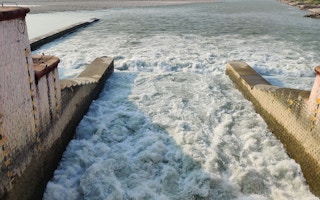Last month’s media reports in India suggesting non-cooperation of Bhutan and Nepal to maintain critical water infrastructures in the shared transboundary river systems were found not to be true. It was clear Bhutan didn’t stop water and Nepal didn’t prohibit Indian engineers to carry out regular flood embankment repair and maintenance work in the Gandak dam in Nepal.
In a subsequent press release, the Foreign Ministry of Bhutan clarified and confirmed Bhutanese government’s commitment to repair and maintain the irrigation channels to ensure water for downstream communities in the state of Assam in India.
Such distorted facts and misinformation on transboundary water issues could stifle and stall long-standing cooperation mechanisms. There is an urgent need to tackle such information disorder to bolster transboundary water cooperation in South Asia.
“
[The dominant narrative of water sharing] perpetuates the zero sum approach to, and attitude towards, the regions shared waters and in turn leads to narrowly-focused cooperation agreements and data sharing arrangements.
Information disorder consists of disinformation (false content propagated with the intent to cause harm), misinformation (false content propagated without the knowledge that it is false/misleading or the intention to cause harm) and malinformation (genuine content shared with a false context and an intention to harm).
Such mis- and dis-information on shared waters appeared in the media when border tensions between India and its neighbours were brewing up and cross-border flood preparedness measures in full swing.
While India and Nepal were grappling with the border skirmish over Lipulekh pass, Kalapani and Limpiyadhura in western Nepal region, there were increased confrontation between Indian and Chinese forces in Galwan valley in the Ladakh region.
Due to these border tensions, there were already lot of fake news, mis- and disinformation in the social media and other forums. Some of them were rife with nationalistic ideologies, trying to spread rumors and fuel mistrust, speculation and skepticism among the friendly governments, citizens and civil society groups in Nepal, India and Bhutan.
Public opinion and sentiments influenced by such fake news, mis- and dis-information are detrimental to long-standing people-to-people cooperation initiatives in the border regions in these countries, including those on transboundary rivers.
Many of these transboundary river systems are witnessing climate change impacts such as intense floods and droughts. Growing water, food and energy demands have put additional pressure on these river systems. Infrastructure projects such as hydro-power dams and flood embankments and other extractive industries such as sand and gravel mining further alter the natural hydrology and health of these rivers.
Ensuring evidence-based and credible information on all these changes taking place in the transboundary river systems is critical to support informed public discourse and policies on water cooperation in the region.
Evidence shows there is widespread mistrust, conspiracy theories and blame prevalent among South Asia countries on water issues and water is not seen as a shared challenge by many governments in the region.
For example, analyses and media reports in India often portray and present distorted views on flooding in transboundary rivers between India and Nepal by pointing out mis-management of dams and reservoirs in upstream Nepal. Water experts have clarified this is a myth and have highlighted the geographical factors and coordination gaps behind these floods in downstream Indian regions along the Nepal-India border.
Tackling such information disorder related to shared waters in South Asia, including transboundary river systems, requires a multi-pronged approach promoting multi-stakeholder dialogues at various levels:
1. Bridge the knowledge-policy-practice gaps
While the knowledge system on shared waters issues in South Asia is evolving, evidence suggests limited engagement of these knowledge with the policy and practice on shared waters. Quite often politics, including national and sub-national political priorities in basin states, determine the shared waters policy and practice.
Such atmospheres are conducive for spreading more mis-and dis-information and this in turn fuels more mistrust among stakeholders engaged in cooperative actions. Public opinions based on fictions and fake news on shared waters and not on science-based facts are detrimental to any cooperative action.
There is a need to further improve science-policy-practice interface on shared waters in South Asia by supporting multi-stakeholder dialogue platforms and networks.
The Indus Basin Knowledge Platform (IBKP)—developed by the International Water Management Institute (IWMI) as part of the UK Department for International Development (DFID)-supported South Asia Water Governance Programme (SWAGP)—is one such multi-stakeholder platform.
Initiatives are under way to further strengthen and institutionalise such basin-level knowledge-policy-practice platforms. Such multi-stakeholder platforms, which promote active participation of decision makers and elected representatives will further improve interaction with experts, scientists and practioners.
More support for data journalism initiatives is needed to build capacities of journalists and media professionals to better understand, analyse, interpret and present complex socio-ecological and economics data on transboundary rivers in the region.
2. Build and strengthen dialogue avenues
Evidence-informed dialogues are essential to maintain trust and shift the narrative from a zero-sum agenda towards win-win scenarios. Existing official mechanisms of discussions and dialogues between riparian states in South Asia are mostly bilateral in nature.
Examples include the Nepal-India Joint Ministerial Commission on Water Resources (JMCWR) and the India-Bangladesh Joint River Commission (JRC). While these established official mechanisms, often referred to as Track I dialogues, there are other initiatives to support and promote multi-stakeholder dialogues involving academia, CSOs, media and private sector in transboundary water issues.
The Brahmaputra Dialogue and the Mahakali Dialogue are such initiatives from the region promoting more evidence-informed, multi-stakeholder dialogues. Since many such dialogue platforms are project-based, it is important to consider their sustainability by identifying suitable opportunities to institutionalise them.
3. Broaden the scope to shared benefits and SDGs
Water sharing is the dominant narrative driving shared waters discourse and dialogues in South Asia. This perpetuates the zero sum approach to, and attitude towards, the regions shared waters and in turn leads to narrowly-focused cooperation agreements and data sharing arrangements.
These transboundary river systems are critical to livelihoods, food and energy security, climate and disaster resilience and boost trade integration and connectivity in the region. For example, 43 per cent of India’s GDP is generated in the Ganges, Brahmaputra and Indus river basins.
These economic contributions and other benefits from these rivers are neither adequately included in water cooperation dialogues nor discussed and shared in the media to shape and shift the public opinion towards equitable sharing of benefits.
Framing the water cooperation discussions in the larger context of Sustainable Development Goals (SDGs), in particular that linked to SDG 6 (Water and Sanitation for All), will help mobilise more participation and build political will among governments, businesses and civil societies in the region.
Since the SDGs are widely discussed and there is already political will and momentum on SDGs in the region, the chances of SDG progress data misinterpretation and manipulation, including those related to SDG Target 6.5 on transboundary water cooperation, are slim.
The recently launched SDG 6 Global Acceleration Framework, which is driven by country demand, is an opportunity to spur more evidence-informed discussions, dialogues and actions on transboundary water cooperation in the region.
The need for such transboundary water cooperation is all the more critical as large parts of South Asia are currently flood affected. Most of it in the major transboundary river systems of Ganges and Brahmaputra and their tributaries.
As per latest estimates more than 4 million people are affected and thousands displaced due to floods and landslides. Information on rivers and floods needs to be credible. Attempts to spread mis- and disinformation on rivers and floods, could jeopardise the efforts of communities, government authorities and others who are at the frontlines of flood response and relief amidst a growing pandemic.
It is also critical for governments and other stakeholders in the region to take cognisance of the harms these sorts of information disorder can inflict on the region’s ongoing efforts and future plans on transboundary water cooperation.
Jyotiraj Patra is project manager of Transboundary Rivers of South Asia (TROSA) at Oxfam and an Accredited Partnership Broker. Views expressed are personal.











